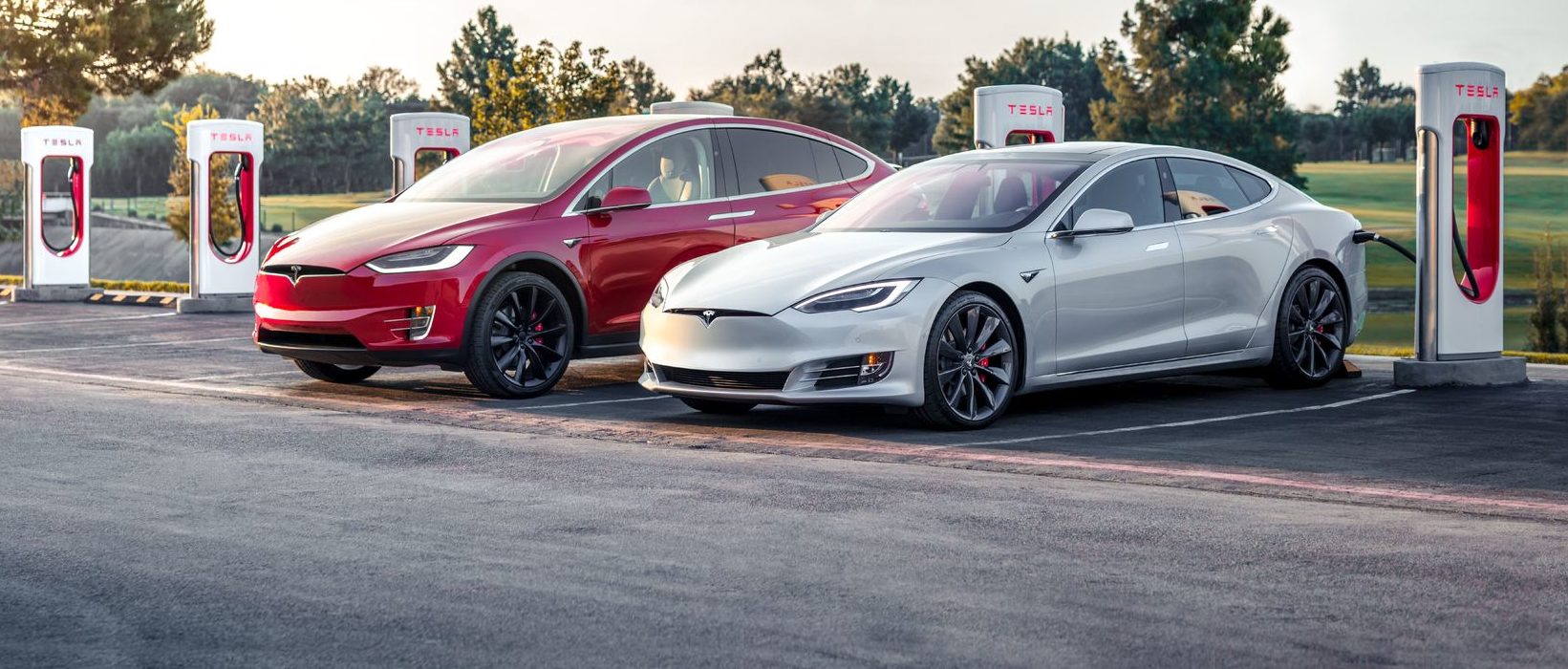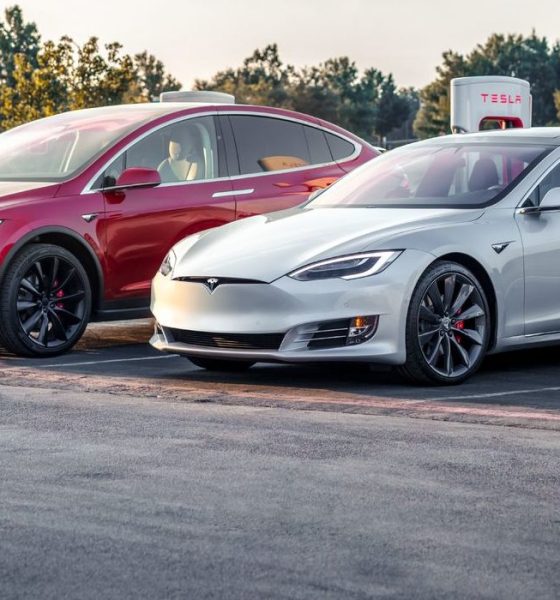

News
Tesla’s Q1 delivery results highlight the need for a Model S and Model X update
One of the most notable takeaways from Tesla’s Q1 2019 vehicle production and deliveries report was the steep decline in Model S and Model X sales. Over the course of the quarter, Tesla produced 14,150 Model S and X, a drastic drop from the 25,000 units that were manufactured last quarter. Deliveries of the flagship sedan and SUV also fell to 12,100 units. Under these circumstances, it appears that the time is now right for Tesla to start preparing for the release of an updated Model S and Model X.
A steep decline
Tesla did not provide a commentary behind the decline in Model S and X sales. This does not mean that the lower production and delivery figures of the vehicles were a complete surprise, as Tesla did shift a lot of its efforts in producing the Model S in favor of the Model 3 in Q1. The vehicles’ entry-level trim, the 75D variant, was also discontinued. Thus, the signs of a decline were already there. What was really surprising was the scope and gravity of the decline.
A possible explanation behind the Model S and Model X’s numbers in the first quarter may lie in the simple fact that the vehicles, particularly the full-size premium sedan, are getting long in the tooth. Tesla started producing the Model S in 2012, and the vehicle has pretty much stayed the same since then, save for a facelift when the Model X was released. Granted, improvements were rolled out to the Model S as soon as they were available, as noted by Elon Musk in a tweet, but design-wise, Tesla’s flagship sedan is still practically competing in the market with a nearly 7-year-old interior and exterior.

The Model 3’s immense success did not help the Model S’ case either. It should be noted that Tesla anti-sold the Model 3 after it was unveiled, with the company and Elon Musk asserting that the Model S was a superior vehicle. Now that the Model 3 is making a mark in several markets across the globe, it is becoming evident that the electric sedan is simply Tesla’s best bang-for-your-buck car. With Tesla’s latest hardware and batteries, the Model 3 is a solid choice. Other Model 3-specific features, such as Track Mode for the Performance variant, add to the vehicle’s attractiveness to car buyers.
The Model 3 is such a solid vehicle that it is starting to make the Model S a harder sell, at least in its present iteration. Granted, the Model S is larger, and it has more bells and whistles such as Smart Air Suspension and a second display, but these are luxuries that a significant number of car buyers will likely be willing to forego in exchange for savings associated with a Model 3 purchase. The Tesla Model Y appears set to do the same to the Model X as well, as the vehicle presents much of the premium SUV’s advantages in a smaller package, at a far more affordable price.
A better Model S and X in the Model 3 era
If Tesla wishes to rekindle the interest and justify the higher prices of its flagship sedan and SUV, it would be a good idea to introduce updated versions of the vehicles as soon as the company is able. These improvements can come in various forms, such as better range, significantly better performance, and a far more exquisite exterior and interior design. With these improvements in place, the Model S and X will not only have the advantage of larger cabin space and a handful of unique features over their more affordable stablemates. They will be vehicles that are truly, without a doubt, a class above the Model 3 (and the Model Y for that matter).

It’s not like Tesla does not seem to be preparing for a potential Model S and Model X update either. Last year, a patent application emerged depicting a Model S/X dashboard equipped with the Model 3’s clever and acclaimed HVAC system. Panasonic, Tesla’s battery partner, also announced last November that it is doubling down on its partnership with the electric car maker by bringing some of its Japan-based battery cell production activities to the United States.
In a statement to the Nikkei Asian Review, Panasonic stated that it will be bringing its operations that build the Model S and Model X’s 18650 cells over to a “US-based unit starting (next) April (2019).” Elon Musk noted during the Q4 earnings call that there are no plans to change the Model S and Model X’s batteries to 2170 cells. Perhaps improved 18650 cells are in order with Panasonic’s move to the US? One can hope.
At this point in Tesla’s history, it would probably be wise to temper expectations with regards to the Model S and Model X’s quarterly sales. Tesla is now at a point where it is pursuing the mass market, and the company is accomplishing this with the Model 3 (and later, the Model Y). The Model S and Model X will definitely still be the company’s flagships, but they will likely just see a sustained demand of perhaps 25,000 per quarter, and that’s completely fine. Both vehicles were brought to market to prove that electric cars can be better than their gasoline-powered counterparts. Both vehicles already accomplished their mission. The Model 3 and Model Y is proof of that.

News
Tesla FSD fleet is nearing 7 billion total miles, including 2.5 billion city miles
As can be seen on Tesla’s official FSD webpage, vehicles equipped with the system have now navigated over 6.99 billion miles.

Tesla’s Full Self-Driving (Supervised) fleet is closing in on almost 7 billion total miles driven, as per data posted by the company on its official FSD webpage.
These figures hint at the massive scale of data fueling Tesla’s rapid FSD improvements, which have been quite notable as of late.
FSD mileage milestones
As can be seen on Tesla’s official FSD webpage, vehicles equipped with the system have now navigated over 6.99 billion miles. Tesla owner and avid FSD tester Whole Mars Catalog also shared a screenshot indicating that from the nearly 7 billion miles traveled by the FSD fleet, more than 2.5 billion miles were driven inside cities.
City miles are particularly valuable for complex urban scenarios like unprotected turns, pedestrian interactions, and traffic lights. This is also the difference-maker for FSD, as only complex solutions, such as Waymo’s self-driving taxis, operate similarly on inner-city streets. And even then, incidents such as the San Francisco blackouts have proven challenging for sensor-rich vehicles like Waymos.
Tesla’s data edge
Tesla has a number of advantages in the autonomous vehicle sector, one of which is the size of its fleet and the number of vehicles training FSD on real-world roads. Tesla’s nearly 7 billion FSD miles then allow the company to roll out updates that make its vehicles behave like they are being driven by experienced drivers, even if they are operating on their own.
So notable are Tesla’s improvements to FSD that NVIDIA Director of Robotics Jim Fan, after experiencing FSD v14, noted that the system is the first AI that passes what he described as a “Physical Turing Test.”
“Despite knowing exactly how robot learning works, I still find it magical watching the steering wheel turn by itself. First it feels surreal, next it becomes routine. Then, like the smartphone, taking it away actively hurts. This is how humanity gets rewired and glued to god-like technologies,” Fan wrote in a post on X.
News
Tesla starts showing how FSD will change lives in Europe
Local officials tested the system on narrow country roads and were impressed by FSD’s smooth, human-like driving, with some calling the service a game-changer for everyday life in areas that are far from urban centers.

Tesla has launched Europe’s first public shuttle service using Full Self-Driving (Supervised) in the rural Eifelkreis Bitburg-Prüm region of Germany, demonstrating how the technology can restore independence and mobility for people who struggle with limited transport options.
Local officials tested the system on narrow country roads and were impressed by FSD’s smooth, human-like driving, with some calling the service a game-changer for everyday life in areas that are far from urban centers.
Officials see real impact on rural residents
Arzfeld Mayor Johannes Kuhl and District Administrator Andreas Kruppert personally tested the Tesla shuttle service. This allowed them to see just how well FSD navigated winding lanes and rural roads confidently. Kruppert said, “Autonomous driving sounds like science fiction to many, but we simply see here that it works totally well in rural regions too.” Kuhl, for his part, also noted that FSD “feels like a very experienced driver.”
The pilot complements the area’s “Citizen Bus” program, which provides on-demand rides for elderly residents who can no longer drive themselves. Tesla Europe shared a video of a demonstration of the service, highlighting how FSD gives people their freedom back, even in places where public transport is not as prevalent.
What the Ministry for Economic Affairs and Transport says
Rhineland-Palatinate’s Minister Daniela Schmitt supported the project, praising the collaboration that made this “first of its kind in Europe” possible. As per the ministry, the rural rollout for the service shows FSD’s potential beyond major cities, and it delivers tangible benefits like grocery runs, doctor visits, and social connections for isolated residents.
“Reliable and flexible mobility is especially vital in rural areas. With the launch of a shuttle service using self-driving vehicles (FSD supervised) by Tesla in the Eifelkreis Bitburg-Prüm, an innovative pilot project is now getting underway that complements local community bus services. It is the first project of its kind in Europe.
“The result is a real gain for rural mobility: greater accessibility, more flexibility and tangible benefits for everyday life. A strong signal for innovation, cooperation and future-oriented mobility beyond urban centers,” the ministry wrote in a LinkedIn post.
News
Tesla China quietly posts Robotaxi-related job listing
Tesla China is currently seeking a Low Voltage Electrical Engineer to work on circuit board design for the company’s autonomous vehicles.

Tesla has posted a new job listing in Shanghai explicitly tied to its Robotaxi program, fueling speculation that the company is preparing to launch its dedicated autonomous ride-hailing service in China.
As noted in the listing, Tesla China is currently seeking a Low Voltage Electrical Engineer to work on circuit board design for the company’s autonomous vehicles.
Robotaxi-specific role
The listing, which was shared on social media platform X by industry watcher @tslaming, suggested that Tesla China is looking to fill the role urgently. The job listing itself specifically mentions that the person hired for the role will be working on the Low Voltage Hardware team, which would design the circuit boards that would serve as the nervous system of the Robotaxi.
Key tasks for the role, as indicated in the job listing, include collaboration with PCB layout, firmware, mechanical, program management, and validation teams, among other responsibilities. The role is based in Shanghai.
China Robotaxi launch
China represents a massive potential market for robotaxis, with its dense urban centers and supportive policies in select cities. Tesla has limited permission to roll out FSD in the country, though despite this, its vehicles have been hailed as among the best in the market when it comes to autonomous features. So far, at least, it appears that China supports Tesla’s FSD and Robotaxi rollout.
This was hinted at in November, when Tesla brought the Cybercab to the 8th China International Import Expo (CIIE) in Shanghai, marking the first time that the autonomous two-seater was brought to the Asia-Pacific region. The vehicle, despite not having a release date in China, received a significant amount of interest among the event’s attendees.








